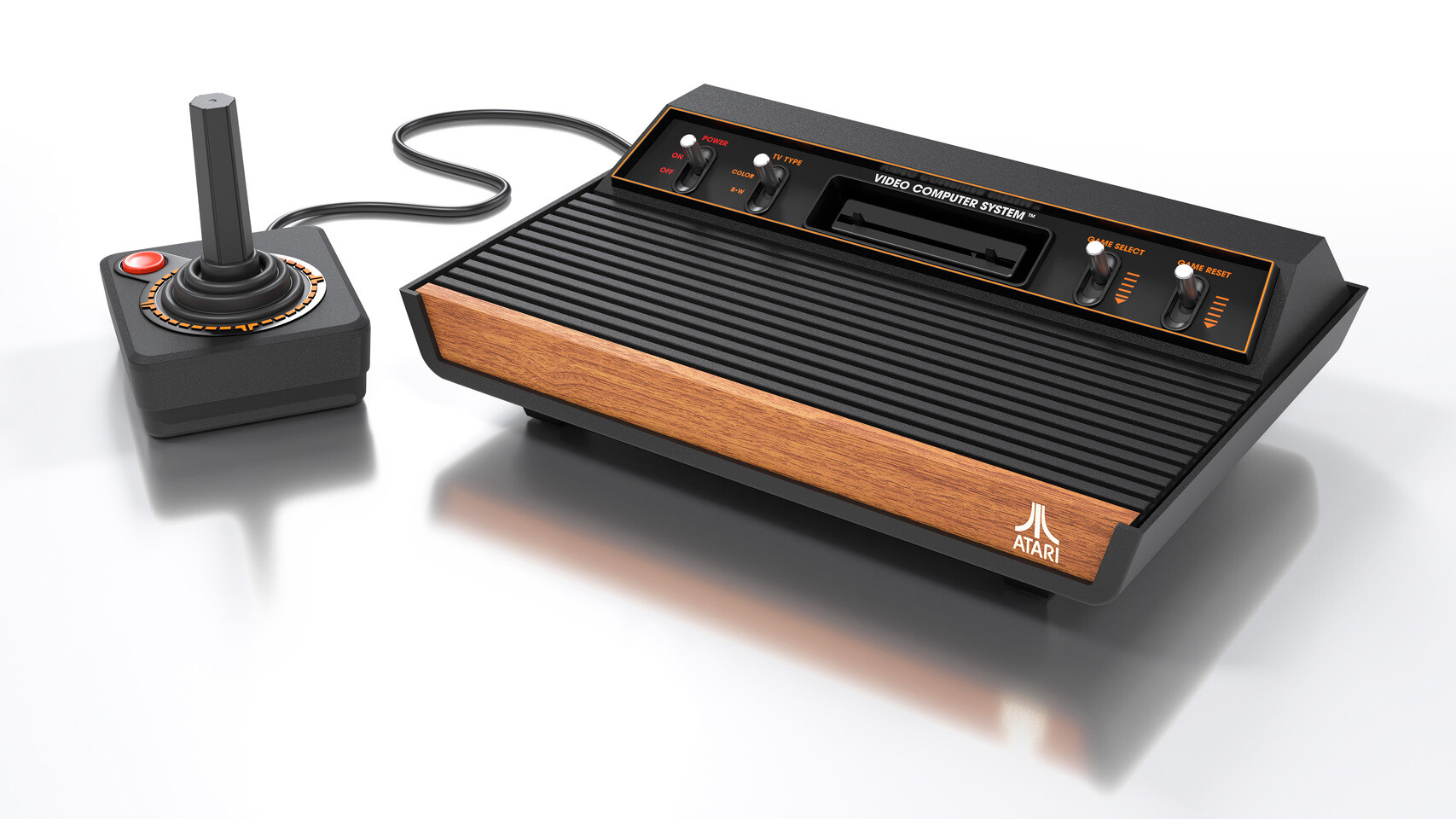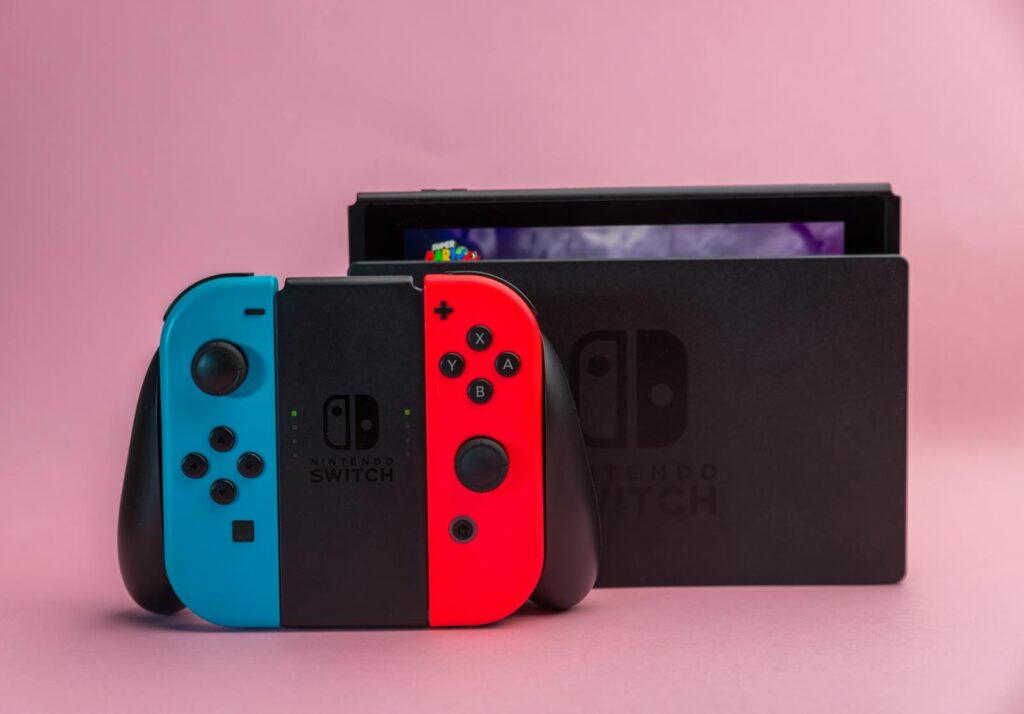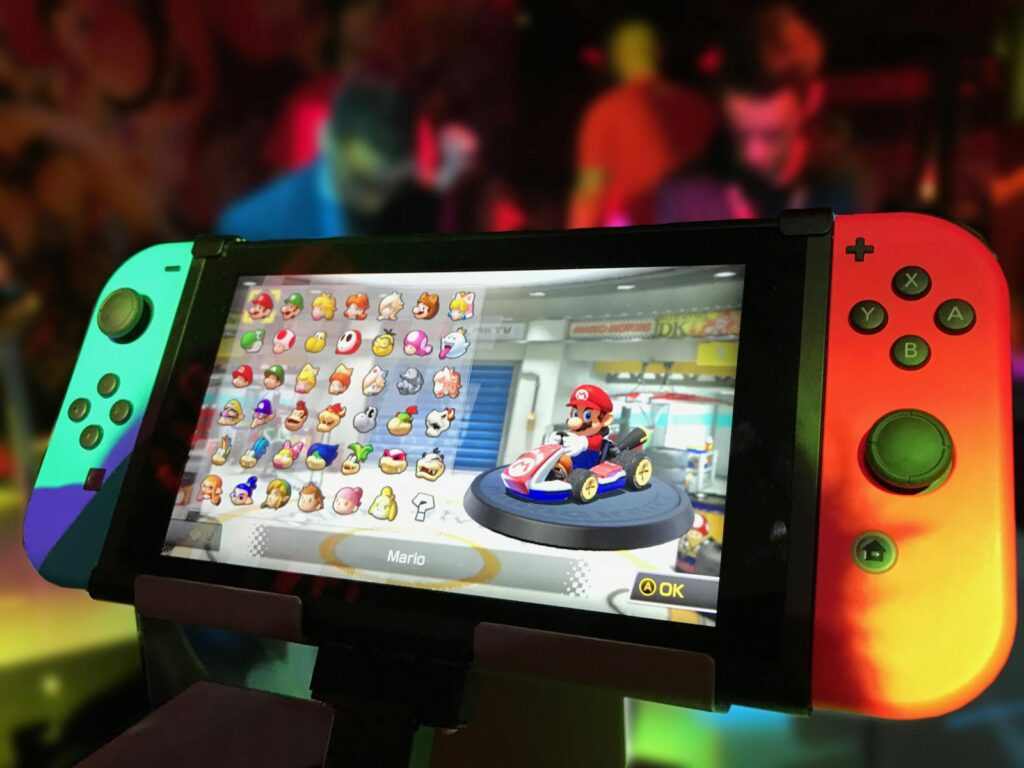Remember that feeling? The glow of the CRT, the satisfying click of a plastic controller, the sheer joy of a digital world unfolding right there in your living room? Before the ultra-realistic graphics and sprawling open worlds of today, there was a time when video games were just finding their feet, yet they utterly captivated us. It was an era of innovation, daring ideas, and consoles that, against all odds, became the absolute rulers of our entertainment landscape, shaping our childhoods and redefining what ‘play’ truly meant.
We’re not just talking about old boxes here; we’re diving deep into the DNA of digital entertainment. These weren’t just gadgets; they were cultural phenomena, often arriving ahead of their time, or precisely when the world was ready for a new kind of magic. From the very first flickering pixels on our TV screens to the pocket-sized wonders that kept us glued on long car trips, these machines laid the groundwork for the multi-billion-dollar industry we know today. They proved that a little bit of electronic ingenuity could create boundless fun.
So, buckle up, grab your favorite retro snack, and prepare for a trip down memory lane! We’re celebrating the trailblazers, the pioneers, and the unexpected champions that carved out their kingdoms in our homes and our hearts. These are the game consoles that truly ruled, setting the stage for every pixelated adventure that followed. Get ready to rediscover the legends that made us say, ‘Just one more game!’

1. **The Magnavox Odyssey: The Genesis of Home Gaming**It all started with an idea, a spark in the mind of an engineer named Ralph H. Baer. Back in 1966, while most people were probably still pondering color TV, Baer was already dreaming bigger. He envisioned an electronic device that could hook right up to a standard television, transforming our passive viewing screens into interactive playgrounds. This wasn’t just thinking outside the box; it was inventing the box itself, a concept so radical it almost seems quaint now.
With permission from his employer, Sanders Associates, Baer brought his vision to life in the form of the now-legendary ‘Brown Box.’ This prototype wasn’t sleek, but it was revolutionary. It could play a limited number of games, including a rudimentary version of table tennis and even a simple light gun game. Imagine seeing that for the first time – your TV, usually reserved for news and sitcoms, suddenly responding to your commands! It must have felt like pure magic, a glimpse into a future we could barely comprehend.
Sanders Associates, recognizing the genius of Baer’s invention, wisely patented the unit. They then licensed these patents to Magnavox, a name that would forever be etched into the annals of gaming history. In 1972, the Magnavox Odyssey was manufactured and released, becoming the undisputed first home video game console. It was a console that bravely stepped into uncharted territory, offering an experience unlike anything seen before in the comfort of one’s own home.
The Odyssey was a marvel, not just for what it *could* do, but for what it *represented*. It was concrete proof that interactive entertainment had a viable and exciting place in the home, that families could gather around a TV not just to watch, but to *play* together. It didn’t just introduce games; it introduced a whole new way of communal entertainment, laying down a fundamental pillar for the industry’s future.
Its influence was immense and far-reaching. It was a testament to the power of a single innovative idea. In fact, its now-famous table tennis game was seen by none other than Nolan Bushnell, who, believing he could make something even better, went on to form Atari. Talk about making a grand entrance and leaving a lasting legacy – the Odyssey truly started it all, a silent king that paved the way for an entire empire.

2. **Atari Pong Home Console: Bringing Arcade Hits to Your Living Room**Speaking of Nolan Bushnell, his story is intrinsically linked to the Odyssey’s groundbreaking arrival. After witnessing Magnavox’s pioneering effort and its simple yet engaging table tennis game, Bushnell, alongside Ted Dabney, felt a competitive spark ignite within them. They were convinced they could refine the concept, make it even more accessible, and, let’s be honest, make it even more fun for the masses. And so, Atari, Inc. was born, a name that would soon become synonymous with video games for an entire generation.
With the brilliant Allan Alcorn on board, Atari quickly developed its second arcade game: Pong. You know Pong, right? The iconic, deceptively simple game of two paddles and a bouncing digital ball? It launched in 1972 and was an instant sensation, quickly outstripping the success of Atari’s first arcade game, Computer Space. Pong wasn’t just a game; it was a phenomenon, a cultural touchstone that proved video games were here to stay, and everyone wanted a piece of the action.
The arcade machines were fantastic, drawing crowds and gobbling up quarters, but what if you could have that thrill at home? That’s exactly what Atari decided to do. Capitalizing on Pong’s monumental popularity and recognizing the untapped home market, Atari partnered with the retail giant Sears to release a home console version in 1975. This was absolutely huge, a game-changer in every sense of the word!
No longer did you have to trek to the local arcade, diner, or even a bar to get your Pong fix. You could have endless paddle-bouncing action right there in your living room, whenever you wanted, without ever having to leave your couch. It was an experience that felt futuristic and incredibly personal, making gaming an integral part of home life for many families who had never considered it before.
The Atari Pong home console wasn’t just a product; it was a revelation for the average consumer. It democratized gaming, moving it from the specialized, often noisy arcades, directly into the heart of family homes across America. It was a self-contained unit dedicated to one incredibly addictive game, making it easy to understand and even easier to fall in love with. This bold move firmly established Atari as a dominant force in the nascent home console market, setting the stage for even bigger things to come and truly earning its crown as an undisputed ruler of the living room.

3. **The Microvision: Handheld Innovation on the Go**While home consoles were busy carving out their space in living rooms, another revolution was quietly brewing in the background, one that would eventually put immersive gaming directly into the palm of your hand. The journey to true handheld *video* games began with a wave of electronic game devices that emerged in the 1970s and early 1980s. These early devices, like Mattel’s immensely successful 1977 games Auto Race and Football, were pioneers in their own right, captivating players with simple, built-in games, often utilizing LED, VFD, or rudimentary LCD displays.
The real game-changer for handhelds, however, arrived with the widespread introduction of versatile Liquid Crystal Display (LCD) screens. Suddenly, games weren’t limited to fixed graphics or simple patterns of lights. These new, more dynamic screens gave handheld gaming the unprecedented flexibility to display a wide array of content, effectively opening up a whole new universe of possibilities for truly portable play. This was a pivotal moment, fundamentally shifting from mere electronic toys to genuine handheld *video* game consoles.
Enter Milton Bradley’s Microvision, which burst onto the scene in 1979, ready to capitalize on this burgeoning technology. This device wasn’t just another handheld; it was a bona fide innovator, pushing the boundaries of what portable gaming could be. It proudly featured a 16×16 pixel LCD screen, a relatively small canvas by today’s standards, but one that allowed for dynamic, changing gameplay that felt incredibly advanced for its time.
But here’s the kicker, the feature that truly set it apart and etched its name into history: the Microvision was the *first handheld to use interchangeable game cartridges*. Yes, you read that right! Long before the Game Boy or even more modern portable systems, the Microvision offered the groundbreaking ability to swap out game cartridges, meaning endless entertainment from a single device, rather than being stuck with just one built-in game. This modular approach was revolutionary for a handheld.
The Microvision might not be a household name today, overshadowed by later, more successful handhelds, but its indelible impact on the evolution of gaming cannot be overstated. It was a visionary leap, proving that a portable device could be far more than a single-game wonder. It demonstrated the immense power of a modular approach to gaming, where new experiences could be purchased and slotted in, much like its big console cousins. This innovative spirit cemented its place as a groundbreaking ruler in the history of handheld gaming, even if its reign was brief, it opened the door for everything that came after.

4. **Nintendo Game & Watch: Paving the Way for Portable Dominance**Before the mighty Game Boy ruled playgrounds and long car journeys with an iron fist, there was another Nintendo innovation that truly captivated portable gamers and set the stage for future triumphs: the Game & Watch series. This groundbreaking line of devices, first introduced in 1980, didn’t just entertain; it set a new standard for what a handheld device could be, and believe it or not, it all started with a simple observation on a Japanese train.
The legendary Gunpei Yokoi, a Nintendo design genius whose name would become synonymous with portable gaming, was the brilliant mastermind behind the Game & Watch. His moment of inspiration struck when he noticed a bored businessman trying to pass the time on a train by idly fiddling with an LCD calculator. Yokoi recognized the untapped potential for simple, engaging entertainment within such a compact, everyday device. He saw an opportunity to cleverly meld utility with fun, leveraging the same credit-card-sized calculator technology that was rapidly becoming commonplace.
What truly made the Game & Watch special, and contributed to its overwhelming success, was its ingenious dual functionality. Each unit featured an LCD-based game, offering immediate, addictive fun. But, with a stroke of genius, Yokoi also designed it to include a digital time display right in the corner of the screen. This meant the device could elegantly double as a watch, offering practical everyday use alongside its gaming capabilities. It was a masterclass in design, transforming the device from merely a toy into a genuine personal electronic companion that people carried everywhere.
While technically categorized by some as handheld ‘electronic games’ rather than ‘video game consoles’ due to their use of fixed-segment LCDs rather than fully programmable pixel screens, the immense success and widespread appeal of the Game & Watch series cannot be overstated. According to our context, these types of ‘simple electronic handheld games turned into a ‘$400 million category.” Their monumental popularity proved, beyond a shadow of a doubt, the massive market for accessible, portable fun that could be enjoyed anytime, anywhere.
More importantly, this unparalleled success directly inspired and led Nintendo, under Yokoi’s continued design leadership, to develop the iconic Game Boy, which would release in 1989 and become arguably the most dominant handheld ruler of all time. The Game & Watch wasn’t just a successful product in its own right; it was the essential stepping stone, a crucial part of Nintendo’s journey to global portable gaming supremacy and a true ruler by laying the very foundation of portable play.”
Alright, so we’ve journeyed through the absolute genesis of home gaming and even dipped our toes into the early waters of portable play. But if you thought those early pioneers were exciting, get ready, because we’re about to dive into the consoles that didn’t just exist; they *ruled*. These are the titans that ignited wars, defined entire eras, and made us argue with our friends about which system was truly supreme. This is where the living room truly became a battlefield, a place where digital dreams (and sometimes nightmares) were made!

5. **Atari 2600: The Home Arcade King (and its wild ride)**After the simple, yet undeniably addictive, paddle-and-ball action of the home Pong consoles, gamers were ready for more. Enter the Atari 2600, initially released as the Atari Video Computer System (VCS) in 1977. This console wasn’t just another step; it was a giant leap for mankind… or at least for living room entertainment! It delivered something truly revolutionary: the ability to play a whole library of different games just by popping in a new cartridge. Talk about a glow-up from a single-game box!
This console became the undisputed champion, a cultural phenomenon that cemented video games as a mainstream entertainment force. For many of us who grew up in the late 70s and early 80s, the Atari 2600 *was* video games. Imagine the thrill of bringing arcade legends like *Space Invaders* and *Pac-Man* home, or diving into original masterpieces like *Pitfall!* and *Adventure*. The vibrant box art, the distinctive joystick, the chunky pixels – it all combined to create an experience that felt futuristic and endlessly fun, turning countless kids (and adults!) into avid gamers.
But even kings can stumble, and the Atari 2600’s reign, while glorious, faced a monumental challenge. Its incredible success led to a gold rush, with a deluge of third-party developers churning out games, many of which were, let’s be honest, not exactly masterpieces. Remember *E.T. the Extra-Terrestrial* or the notoriously terrible port of *Pac-Man*? This flood of low-quality titles, combined with market saturation and intense competition, culminated in the infamous video game crash of 1983. It was a brutal wake-up call that almost destroyed the nascent industry, proving that even an ‘absolute ruler’ needs careful stewardship.
Yet, the Atari 2600’s legacy is undeniable. Despite the crash, it had already demonstrated the immense potential of home consoles and the magnetic appeal of interactive entertainment. It sold millions, introduced countless players to the magic of gaming, and showed everyone what was possible with interchangeable cartridges. It was a wild ride, for sure, a rollercoaster of triumph and tribulation, but it fundamentally shaped the landscape and laid crucial groundwork for what was to come, making it a true ruler of its era.

6. **Nintendo Entertainment System (NES): Gaming’s Phoenix Rising**Just when it seemed like video games were destined to fade into obscurity after the 1983 crash, a hero emerged from the East, ready to not just save the day, but redefine the entire industry. The Nintendo Entertainment System (NES), launched in North America in 1985 (after its Famicom debut in Japan in 1983), wasn’t just a console; it was a resurrection. Nintendo, learning from Atari’s missteps, implemented strict quality control measures, including the now-legendary ‘Seal of Quality,’ which helped rebuild consumer trust and signal that this was serious business.
And serious fun it was! The NES introduced us to iconic characters and groundbreaking games that are still beloved today. Think *Super Mario Bros.* and its revolutionary platforming, *The Legend of Zelda* and its sprawling open-world adventure, the chilling atmosphere of *Metroid*, or the gothic horror of *Castlevania*. These weren’t just games; they were experiences that set new benchmarks for storytelling, level design, and immersive gameplay. They ignited our imaginations and provided countless hours of pixelated joy.
The NES absolutely cemented Nintendo’s place as a global entertainment powerhouse. It wasn’t just a console; it became a cultural touchstone, defining the “8-bit era” for an entire generation. This era firmly established the concept of console generations, as defined by “bits,” where “the use of bits to market consoles to consumers started with the TurboGrafx 16, a console that used an 8-bit central processing unit similar to the Nintendo Entertainment System (NES), but included a 16-bit graphical processing unit.” But before the “bit wars” truly exploded, the NES proved that innovation, quality, and unforgettable characters were the true keys to ruling the living room.
From its unmistakable grey box design to its instantly recognizable controller (with that iconic D-pad!), the NES brought families together around the television, fostering shared experiences and sparking a lifelong love for gaming in millions. It wasn’t merely a product; it was an invitation to adventure, a new form of digital storytelling that became a part of everyday life. The NES truly rose from the ashes of the crash, not just to survive, but to thrive and lay the foundation for modern gaming, making it an undeniable ruler.

7. **Sega Genesis: Welcome to the “Bit Wars”**If the NES brought gaming back from the brink, the Sega Genesis (known as the Mega Drive in many parts of the world) kicked open the doors to an era of pure, unadulterated console rivalry: the “bit wars.” Launched in 1989 in North America, this 16-bit powerhouse arrived ready to challenge Nintendo’s dominance head-on. Sega wasn’t just making a console; they were making a statement: ‘Genesis does what Nintendon’t!’
This era was characterized by aggressive marketing, highlighting technical specifications and creating fierce loyalties. As the context notes, “The use of bits to market consoles to consumers started with the TurboGrafx 16… NEC, the console’s manufacturer, took to market the console as a ’16-bit’ system over the NES’ ‘8-bit’ to establish it as a superior system. Other advertisers followed suit, creating a period known as the ‘bit wars’ that lasted through the fifth generation, where console manufactures tried to outsell each other simply on the bit-count of their system.” The Genesis, with its sleeker design and powerful hardware, embodied this new approach, promising faster, more intense action.
And intense action it delivered! With its flagship character, the lightning-fast Sonic the Hedgehog, Sega created a mascot that was the antithesis of Mario: edgy, cool, and all about speed. Games like *Sonic the Hedgehog*, *Streets of Rage*, and *Mortal Kombat* (with its infamous uncensored blood code!) appealed to an older, ‘cooler’ demographic, carving out a distinct identity for Sega. The Genesis wasn’t afraid to push boundaries, both in terms of content and marketing, directly engaging in a battle for supremacy that gamers absolutely loved.
The console wars of the 16-bit era, primarily between Sega and Nintendo, were legendary. They fueled innovation, pushed developers to create even more ambitious titles, and instilled a passionate sense of allegiance in players. The Sega Genesis, with its bold attitude and groundbreaking games, proved that competition could make everyone better, forcing both companies to elevate their game. It was a true challenger to the throne, firmly establishing itself as a ruler alongside its rival, and igniting some of the most memorable battles in gaming history.
8. **PlayStation: The CD Revolution and 3D Frontier**Just as the 16-bit era reached its peak, a new contender emerged from an unexpected corner, ready to completely transform the landscape of gaming and usher in what many consider the true “golden age.” The original PlayStation (PS1), launched by Sony in 1994 in Japan and 1995 in North America, wasn’t just a console; it was a cultural reset. It abandoned cartridges for CD-ROMs, a move that felt incredibly modern and infinitely capable, forever changing how we thought about game storage and presentation.
This shift to CD-ROMs was a game-changer (pun absolutely intended!). Suddenly, developers had access to vastly more storage, enabling larger worlds, complex cinematic sequences, and, most importantly, the leap into stunning 3D graphics that absolutely blew our minds. Remember the awe of seeing games like *Tomb Raider*, *Final Fantasy VII*, *Resident Evil*, or *Gran Turismo* for the first time? The PlayStation became synonymous with cutting-edge visual experiences, making 2D sprites feel almost ancient overnight. It was an exhilarating time to be a gamer, experiencing uncharted digital territories.
Sony’s shrewd marketing strategy also played a pivotal role in the PlayStation’s meteoric rise. They targeted a broader, more mature audience, making gaming cool and accessible to demographics beyond the traditional ‘kid’ market. The console’s sleek, sophisticated design and its diverse library of games, spanning from intense action to deep role-playing epics, resonated with millions. It was the console that made gaming a legitimate form of adult entertainment, inviting a whole new generation to join the party.
The PlayStation’s commercial success was nothing short of phenomenal, solidifying Sony as a dominant force and effectively ending the long-standing reign of cartridge-based systems. It wasn’t just about the technology; it was about the *experience* it offered. It delivered a sense of limitless possibilities, shaping tastes and expectations for years to come. This console didn’t just rule; it redefined the throne, setting the stage for the modern console wars and cementing its place as an undisputed, genre-defining ruler of the living room and beyond.
And there you have it, a whirlwind tour through the living rooms and digital landscapes of yesteryear! From the very first flickering pixels to the stunning 3D worlds that captivated a new generation, these game consoles weren’t just pieces of plastic and circuitry. They were portals to adventure, arenas for competition, and catalysts for countless memories. They didn’t just play games; they redefined entertainment, sparked our imaginations, and, for a time, were the undisputed rulers of our hearts, our living rooms, and, of course, the trusty controller in our hands. While technology continues its relentless march forward, the impact and nostalgia for these legends will live on forever. So, dust off those old consoles, because sometimes, the best adventures are found in the classics!





